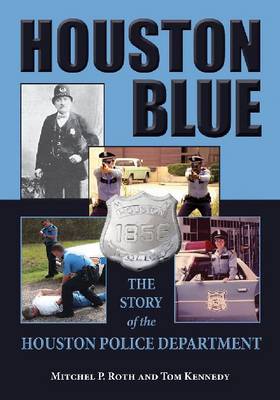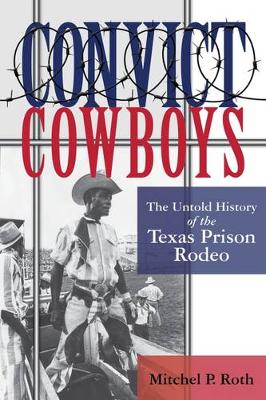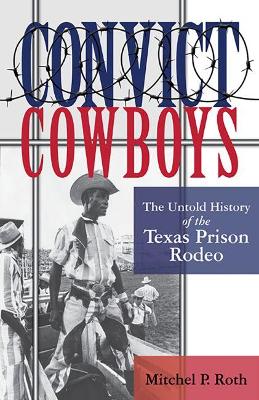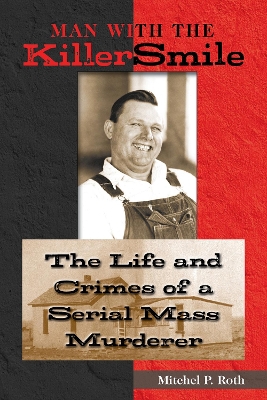North Texas Crime and Criminal Justice
4 total works
Houston Blue offers the first comprehensive history of one of the nation's largest police forces, the Houston Police Department. Through extensive archival research and more than one hundred interviews with prominent Houston police figures, politicians, news reporters, attorneys, and others, authors Mitchel P. Roth and Tom Kennedy chronicle the development of policing in the Bayou City from its days as a grimy trading post in the 1830s to its current status as the nation's fourth largest city. Combining the skills of historian, criminologist, and journalist, Roth and Kennedy reconstruct the history of a police force that has been both innovative and controversial.
Readers will be introduced to a colorful and unforgettable cast of police chiefs and officers who have made their mark on the department. Prominent historical figures who have brushed shoulders with Houston's Finest over the past 175 years are also featured, including Houdini, Teddy Roosevelt and his Rough Riders, O. Henry, former Texas Ranger Frank Hamer, hatchet wielding temperance leader Carrie Nation, the Hilton Siamese Twins, blues musician Leadbelly, oilman Silver Dollar Jim West, and many others.
The Houston Police Department has been at the cutting edge of police innovation. It was one of the first departments in the South to adopt fingerprinting as an identification system and use the polygraph test, and under the leadership of its first African American police chief, Lee Brown, put the theory of neighborhood oriented policing into practice in the 1980s. The force has been embroiled in controversy and high profile criminal cases as well. Among the cases chronicled in the book are the Dean Corll, Dr. John Hill, and Sanford Radinsky murders; controversial cases involving the department's crime lab; the killings of Randy Webster and Joe Campos Torres; and the Camp Logan, Texas Southern University, and Moody Park Riots.
Roth and Kennedy reveal that most of modern Houston's issues and problems are rooted in many of the challenges that faced police officers in the nineteenth century. Anyone who drives in Houston will not be surprised that the city's reputation for poor drivers was already cemented in the 1860s, when ordinances were passed to protect pedestrians from horse-drawn carriages. Likewise, the department's efforts to overcome funding and manpower shortages, and political patronage, are a continuing battle that began a century ago. In the end it is a story about the men and women in blue and the role played by the Houston Police Officers Union in creating a modern 21st-century police force from its frontier roots.
Over the years the rodeo arena not only boasted death-defying entertainment that would make professional cowboys think twice, but featured a virtual who’s who of American popular culture. Readers will be treated to stories about numerous American and Texas folk heroes, including Western fi lm stars ranging from Tom Mix to John Wayne, and music legends such as Johnny Cash and Willie Nelson. Th rough extensive archival research Roth introduces readers to the Convict Cowboys in both the rodeo arena and behind prison walls, giving voice to a legion of previously forgotten inmate cowboys who risked life and limb for a few dollars and the applause of free-world crowds.
Husband, father, uncle, embezzler, serial mass murderer, philanderer, child molester, convict, and military deserter, George Jefferson Hassell was many things to many people, most of them bad. His pattern of familicide crime had begun in 1917, when he slaughtered his common-law wife and her three kids in Whittier, California. Later, in Texas, he married his brother's wife and became stepfather to her eight children.
Using Hassell's confessions and his many interviews with reporters as well as the trial transcripts and reminiscences of those who crossed paths with him in Texas, Oklahoma, and California, Mitchel P. Roth presents the first comprehensive account of the life and crimes of one of the least known multiple murderers in Texas, let alone American, history. Roth situates Hassell's saga within the 1920s Texas criminal justice system, including the death penalty, which Hassell ultimately received from Old Sparky, the electric chair at Huntsville.



